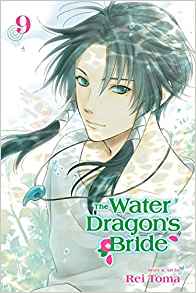Shortcake Cake Volume 4 by suu Morishita
I’m growing more and more fond of this series. I enjoy the steady, slice of life way the plot unfolds, the great sense of place that is grounded in the boardinghouse setting, and most of all the silent moments between the characters that are filled with meaning. I swear, a 4 panel layout of characters from Shortcake Cake just glancing at each other would be a long drawn out speech about feelings in a less well-executed manga.
Switching back and forth one’s object of affections isn’t really anything new, but as Ten starts to reassess her feelings for Riku, Chiaki comes down with a severe case of second male lead in a Korean drama syndrome, where he basically speaks to Ten about his feelings for her in incredibly oblique riddles that she is totally unable to pick up on. Oh, the foolishness and frustration of teenage shoujo manga love! Chiaki and Ten’s fake relationship to fake out Rei gives her an excuse to dismiss his declarations of affection, which Chiaki conveniently times for when Rei is around. Ten realizes her emotions are shifting and thinks to herself that if she was reading a story where she was the protagonist, she wouldn’t like it, because the main character contradicts herself and is selfish. She thinks of her current life being “a bad book” but it seems to more like just what anyone would expect from a teenager not very practiced at friendship. Ten’s self awareness goes a long way in making her sympathetic as she attempts to figure out her suddenly very complicated romantic life.
Chiaki and Riku also attempt to negotiate the strange new undercurrents in their friendship. Ten starts a summer job and in a fraught decision, the trio decide to go to a beach together during their vacation. This volume very much felt like summer, and as Ten goes home she starts to get more clarity over her emotions. I enjoyed the way Ten is self-reflective throughout the book, she seems to be making a decision that will carry over to the next volume, but she’s put in a lot of emotional work behind the next step on her journey.





Recent Comments